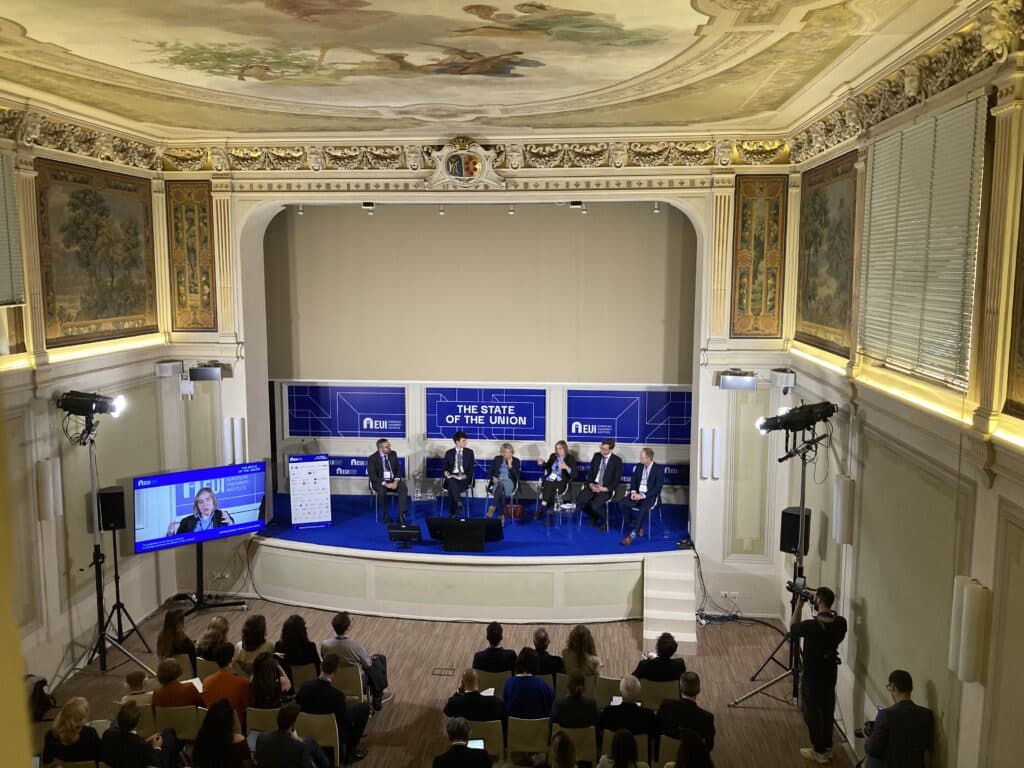FSR Topic of the Month:
Network Codes & Guidelines. A legal perspective.
by Lavinia-Petronela Tanase (FSR)
Week 2: Implementation Challenges: Terms, Conditions and Methodologies.
The EU Electricity Network Codes and Guidelines deal with cross-border and electricity market integration issues. The guidelines (GLs) are the legal instruments that ensure that the regulatory framework is up-to-date with the fast progress of the Internal Energy Market (IEM). But, the GLs do so mostly through their provisions, which support the emergence of further regulatory instruments, called Terms, Conditions, and Methodologies (TCMs). Currently, the Balancing (EBGL), Capacity Allocation and Congestion Management (CACM GL), Forward Capacity Allocation (FCA GL) and System Operation (SOGL) guidelines are to be further implemented through more than 100 regional or European TCMs.
Topics of the TCMs
The flexible regulation of the electricity market and operation of the system is performed under the provisions of the guidelines. Each of the GLs contains specific provisions that mandate the adoption of various TCMs, on specific topics. To name a few, the CACM GL imposes the adoption of methodologies on the definition of cross-border capacity calculation regions (Article 15), short– term (day-ahead and intraday) cross-border capacity calculation methodologies (Article 20), coordinated redispatch and countertrading (Article 35), while the FCA GL proposes the adoption of methodologies on the splitting of long-term cross-zonal capacity (Article 16), as well as on harmonised cross-zonal capacity allocation rules for long-term transmission rights (Article 52). The EBGL requires the drafting of methodologies on pricing balancing energy and cross-zonal capacity used for the exchange of balancing energy (Article 30), as well as methodologies that set out the frameworks for the establishment of European platforms for the exchange of balancing energy (Article 20 – 22). Ultimately, Article 75 SOGL mandates the adoption of methodologies for coordinating the operational security analysis. [1]
Regionality of the decision-making process
Since the TCMs are built around market and system operation topics, the Transmission System Operators (TSOs), as the main technical experts of the Internal Energy Market (IEM), were appointed as the main drafters, through the provisions of the GLs. Other market players, as well, such as the Nominated Electricity Market Operators (NEMOs) (in the case of the CACM GL) may be under obligations to draft TCMs. After the drafting, the TCMs shall be approved by the National Regulatory Authorities (NRAs). The approved TCMs will become binding on the TSOs and all other addressed parties, once each NRA has adopted a national decision to implement the TCM, within its own national jurisdiction. In this way, one can observe that, while the drafting and approval are performed at a regional or EU-wide level, the implementation and monitoring of the implementation is done, firstly, at national level. The national decision of the NRA represents the legal basis through which any interested party can challenge the actions of a TSO or NRA in regards to the potential incorrect implementation of a certain TCM.
In this way, the regulation of the market becomes more decentralised. The EU legislators are not directly involved, but the NRAs and ACER were granted important decision-making powers. In addition, it can be observed that the decision-making process is separated among the regional and European level. The NCs and GLs define the splitting of the IEM in several regions. For example, the CACM GL mandates the definition of capacity calculation regions (CCR) [2], while the Requirements for grid connection of generators NC (RfG NC) refers to synchronous areas [3] and the SOGL to load-frequency control areas (LFC) [4].
All EU TSOs or TSOs from a concerned region will have to cooperate and draft a methodology on a specific topic, as required by the provisions of one of the Guidelines. They are obliged to submit a proposal for a methodology by a certain deadline. [5] The TSOs shall submit the proposal to all NRAs from the EU or to the NRAs from the concerned region, depending on the impact area of the topic dealt with in the methodology. For instance, a proposal for a common capacity calculation methodology, issued under Article 15(1) CACM GL will be drafted by the TSOs from a certain CCR and shall be submitted for approval to all NRAs from the same CCR. On the contrary, a proposal for a methodology establishing the methods to distribute the congestion income among TSOs shall be developed by all EU TSOs and submitted for approval to all EU NRAs. [6]
Once the regional or all EU NRAs receive a proposal for a methodology, they shall approve it with unanimity. The approval will be done through an All/Regional NRAs Framework Agreement. This multinational agreement needs to be further transposed at national level through an individual national decision of each of the NRAs involved in the approval. Given that the methodologies bear uneven distributive effects on the states involved, the NRAs might find it difficult to reach an agreement. In these situations, or at the joint request of the NRAs, ACER will be asked to issue a decision settling the matter. Once again, pursuant to ACER`s decision, each NRA will take a national decision on the implementation of the TCM in question. [7]
Legal value of TCMs
Initially envisaged by the European Commission as technical documents with a legal value similar to the one of the Guidelines themselves, the TCMs have developed into documents whose legal nature remains unclear. Certainly, they are regulatory documents crossing several jurisdictions, aiming to create trans-national legal standards that ought to be further implemented by each MS, separately. The question that still needs to be answered is: how can one qualify these methodologies, from a legal perspective, so as to ensure their swift enforcement at a cross-border level? After all, while we talk about market integration, could we not also add judicial integration to the discussion?
The next blog post will touch upon the second type of implementation challenges: private agreements.
[1] Operational security: means the transmission system’s capability to retain a normal state or to return to a normal state as soon as possible, and which is characterised by operational security limits [Article 3.2.1 Commission Regulation 2017/1485 establishing a guideline on electricity transmission system operation]
[2] Capacity Calculation Region: the geographic area in which coordinated capacity calculation is applied [Article 2.2 Commission Regulation 2015/1222 establishing a guideline on capacity allocation and congestion management]
[3] Synchronous area: areas covered by synchronously interconnected TSOs, such as the synchronous areas of Continental Europe, Great Britain, Ireland – Northern Ireland and Nordic and the powers systems of Lithuania, Latvia and Estonia, together referred to as `Baltic` which are part of a wider synchronous area [Article 2.2 Commission Regulation 2016/631 establishing a network code on requirements for grid connection of generators]
[4] LFC area: means a part of a synchronous area or an entire synchronous area, physically demarcated by points of measurement at interconnectors to other LFC blocks, consisting of one or more LFC areas, operated by one or more TSOs fulfilling the obligations of load-frequency control [Article 2.12 Commission Regulation 2017/1485 establishing a guideline on electricity transmission system operation]
[5] For example, see Articles 15-17, 37, 40 of the CACM GL
[6] Article 71 CACM GL
[7] Most recent decision that ACER issued under its prerogatives of Article 8(1) Regulation 713/2009 was the Decision of ACER No 04/2018 on all TSOs` proposal for Intraday Cross-Zonal Gate Opening and Intraday Cross-Zonal Gate Closure Times, 24 April 2018







